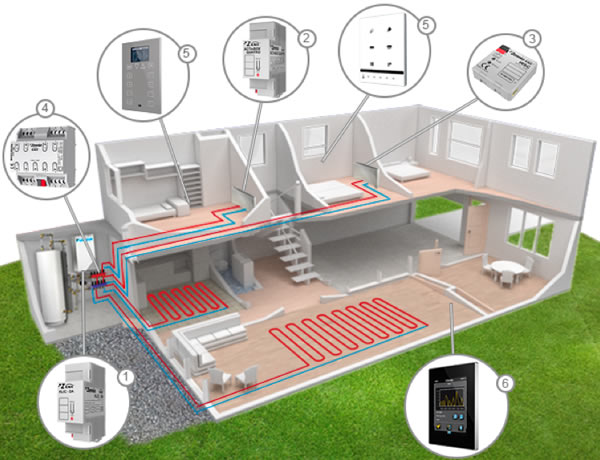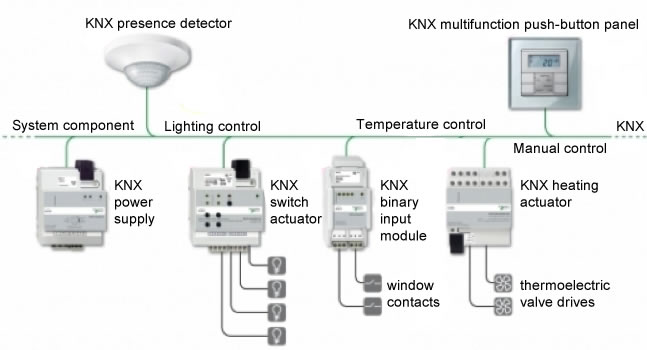 By Simon Buddle, KNXtoday.
By Simon Buddle, KNXtoday.
One of the truisms of life in the low-voltage services world is, that as far as the end user is concerned, everything is our fault. If the lights don’t work, the radiators are too cold, the fans are too noisy, the client’s energy bills are too high, the iPad isn’t controlling the system, the grass in the near paddock is too long, it’s our fault. I’m sure you’ve heard at least one, if not all, of these at some point, and probably over the past few years you just might have been responsible for a problem or two. Go on, admit it – we all have.
Good business owners understand that problems will occur, and will dutifully dispatch engineers to site to resolve them. As a basic principle for reacting to client problems, it is worth asking yourself if your company responds to that call as quickly and diligently as your sales team do to new enquiries. I’ve known many a customer who is more than happy to pay a little more in order to get good service – remember that old saying about paying peanuts and getting monkeys?
There is always the positive side to this to be considered too; client contact, possible up-sell, the chance to complete that tiny missing bit you hadn’t gotten around to finishing. How your company deals with these troubles will depend on the company ethos, but it will ultimately define you as a company. Do you low-ball the tender and run at the end, or will you be there for the long-term, providing customer service?
Stepping up to the Plate
But what if the problem isn’t yours? After all you cannot be held responsible for the noisy fan, right? You didn’t recommend it, install it and neither do you maintain it. If you only give the boiler control panel an on/off signal, why should you be shouted at when the hot water doesn’t work? Understanding where your system starts and finishes in responsibility terms starts during the project design phase, but most importantly, it requires good documentation and agreement. One could suggest that if you are in the firing line for these types of issues after the job is finished, you have already missed the boat.
Lines of system demarcation and responsibility, witness testing and sign off procedures, and first point of contact for fault finding should be agreed well ahead of the client move-in date. In so many instances what this really means is someone stepping up to the plate and being responsible for these processes. Having a meeting together will help to clarify who is responsible for what. Someone will have to be the third-party integration specialist or coordinator. Maybe that’s you.
Let’s take a typical system example of a KNX heating installation: you have provided the room sensors and in-room display, floor temperature probes, the heating actuators and a boiler on/off demand signal.

The following is what I would recommend to keep the client happy and you in profit:
Lines of Demarcation – where your system ends
You are responsible for the room temperature, protecting the floors from overheating, deciding if heat is needed and then requesting that heat and modulating the output to maintain the temperature. There may well be a raft of other functions such as timers, holiday modes, and frost protection, but let’s concentrate on the core operation. From your perspective, the lines of demarcation are the wire that connects to the boiler control panel, the actuators’ output to the valve and the floor maximum overheating threshold.
Witness Testing and Sign Off
This would normally be carried out by the M&E consultants who designed the project, and should always involve all interested parties; plumbers, boiler installers, BMS contractors, the building contractor and ideally the maintenance team/person. Personally, I would always attend, armed with the ETS project running live, with the diagnostics window open showing bus activity and a multi-meter as a minimum.

This is your opportunity to show everyone that your KNX system works. Prove to the team that the boiler on/off demand signal and actuator outputs work, with your meter if necessary. I feel it is also invaluable to demonstrate, via the bus, the communications; room temperature values, set points, actuator statuses and so forth. This openness will give everyone confidence in your abilities.
Ultimately, the system will be signed off against the M&E specification so it is prudent to ensure that you have the most recent version and have thoroughly checked that your system conforms to it before the witness test begins.
Fault Finding
So, the room doesn’t get to temperature and you get the call. Maybe you’ve agreed to do that role as part of your maintenance package. That’s great, but it may not be a problem you can solve. Let’s suggest that the client says that the room never gets to the desired temperature. It is possible that they have left a window open and the freezing winter air is preventing the room from warming up. The floor is at its overheat threshold, the system is working correctly.
If the floor is cold, then we will have to check back at the boiler. Is the demand signal from KNX on? Yes. Is our actuator supplying power to the valve? Yes. Is there hot water in the pipes from the boiler room? No. Clearly something is wrong with the boiler equipment – possibly the control electronics, a safety cut out, failed pump, who knows? But it is time to call in those guys.
Conclusion
Meeting up and agreeing each company’s responsibilities, then documenting and witness testing together will give the project a real sense of team that will lead to a smoother install, better profitability and almost certainly some great future working relationships.
If you understand the lines of demarcation, they will enable logical fault finding and typically a quick resolution to the problem at hand. That surely has to be good news for you and the client.
Simon Buddle is a systems integration consultant and installer. Simon is also a regular contributor to KNXtoday magazine and HiddenWires magazine, and the first winner of the CEDIA Region 1 Special Recognition Award.
You are welcome to comment on this article. See below.












